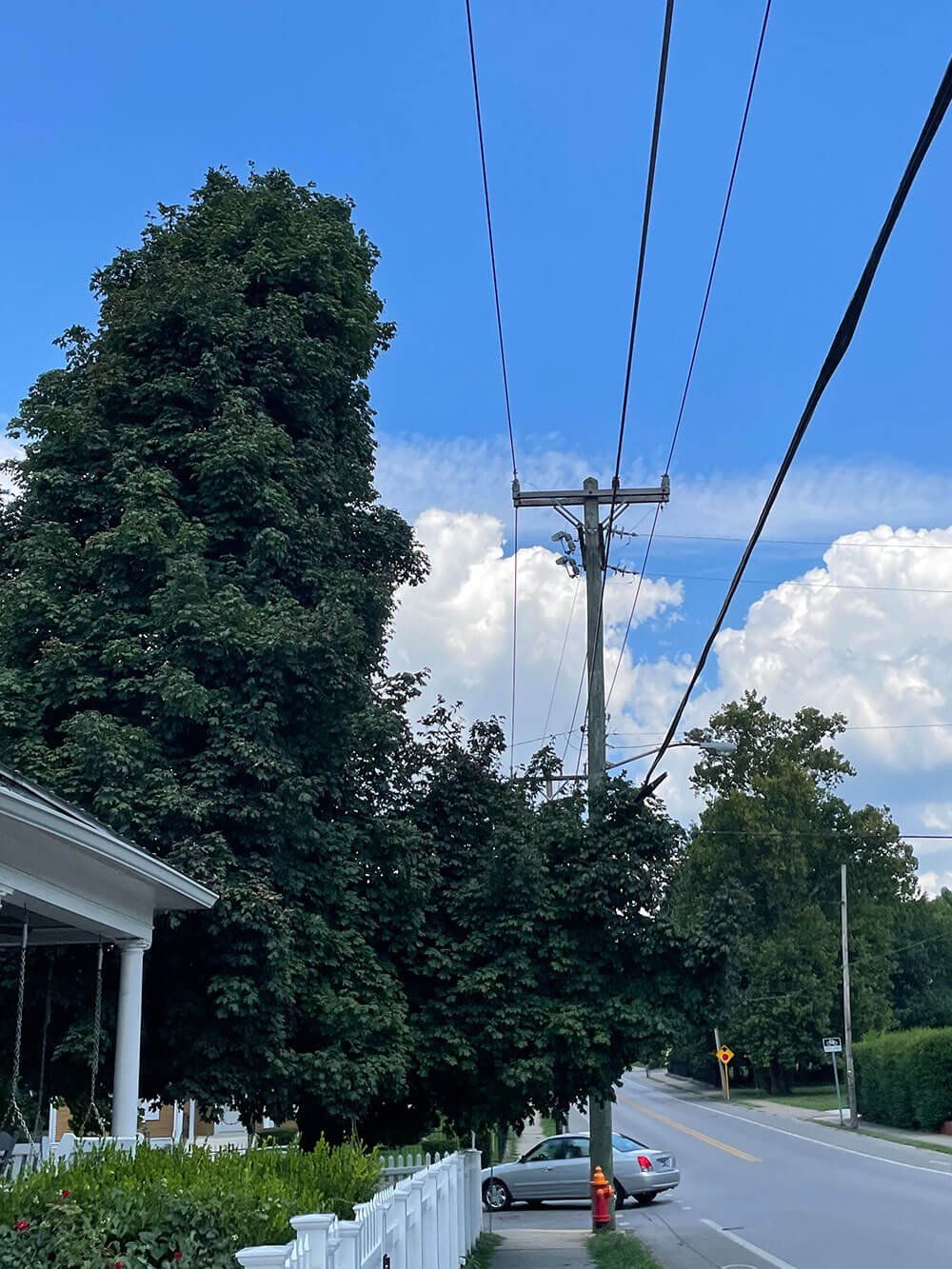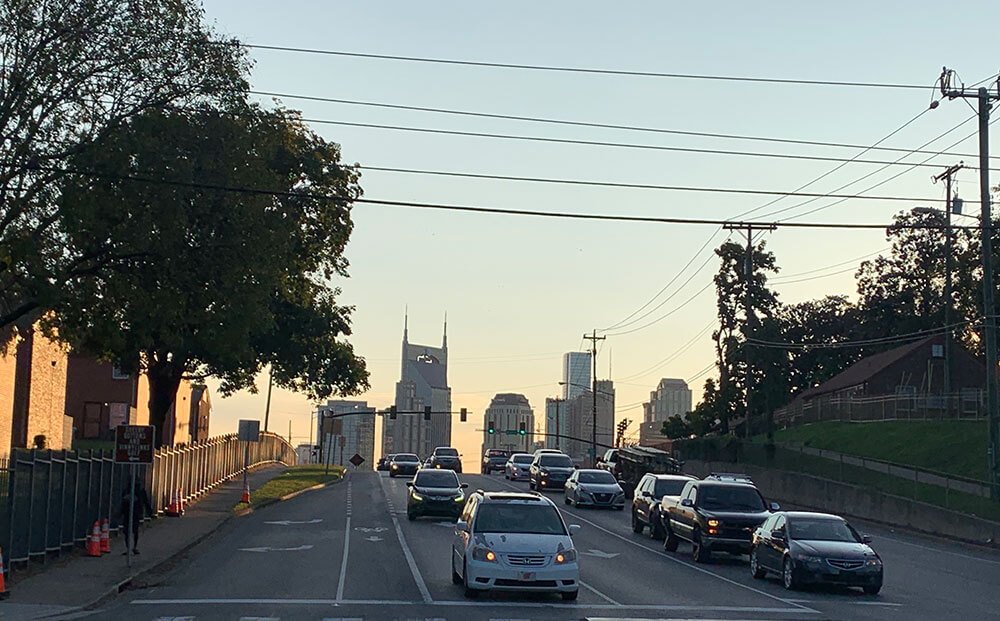Where to Plant a Tree, Part 1: Power Line Proximity
Tree Canopies and Electric Utilities
One of the challenges of living in a city is balancing nature with our built environment. Power lines make modern life possible, but they also pose problems for our tree canopy. When trees are planted and trimmed in a responsible way, however, they can co-exist with power lines and ensure reliable power delivery.
Planting further back from power lines could have spared this tree from being cut in half.
Broken tree limbs are the main cause of outages, so the site where a tree is planted could eventually affect power availability to your home and potentially your neighbors as well. Thinking ahead about how tall and wide a newly planted tree will get can save your tree from unsightly trimming in the future by utility companies. But this doesn’t mean you can’t plant any trees near or under power lines! The right kind of tree or shrub in the right place can still flourish.
Nashville's tree canopy can co-exist with power lines, but it requires thoughtful planning and responsible tree-trimming.
The Electric Company’s Right of Way
For our homes to be connected to the electrical grid, utility companies have a right of way around power equipment, meaning they can take necessary actions to access or maintain the space around their poles, lines (above and below ground) and transformers. When it comes to trees, this means they can trim them or remove them if access to utility equipment is blocked or creates a risk.
For example, Nashville Electric Service (NES) has a tree-trimming program to monitor, assess and prune trees as necessary to support its mission to provide safe and reliable power to customers. NES says the program has led to a reduction in tree-related outages in Nashville. Their tree-trimming guidelines include:
Pruning to keep growth away from power lines. NES allows trees to overhang some circuits, as long as there is a minimum 15-foot clearance between the overhanging tree and the line. Overhang is not allowed on high voltage lines.
Using the arborist-approved method of lateral pruning, rather than topping or “rounding off” a tree
Removing trees directly beneath power lines if they are too difficult to trim
Requiring a six-foot minimum clearance in front of transformers
Requiring a 10-foot radius with no vegetation around poles.
The entire center of this sugar maple has been trimmed away, leaving it an unhealthy eyesore.
Landscaping Around Power Lines
From the perspective of the utility company, the goal is to have no trees come in contact with power lines. However, homeowners and residents want to fill their yards with greenery, provide shade and ensure as much privacy as possible from neighbors and the street. Both goals can be met if tree planting is done strategically. The main considerations are how large the tree (or shrub) will be when it reaches maturity, and whether or not it blocks access to a utility pole or transformer box.
Power lines range in height from 30 to 60 feet, so if you plant an oak or maple or other large canopy tree near a line, you’re creating a future problem for yourself or someone else. A rule of thumb for tree clearance is to use its expected mature height as the distance it should be planted from any impediment. Oaks reach 50 to 80 feet tall and need that much space around them for clearance in case branches break off during a storm.
Smaller trees, such as this Jane magnolia planted as part of the Shelby Avenue Arboretum, can be safely planted beneath power lines. The mature height of the Jane magnolia is 10-15 feet.
Which Tree Species Can Be Safely Planted Near Power Lines?
Fortunately, there are many choices of shorter trees that can be safely planted below and near power lines. These include shrubs (such as viburnams, forsythia and schip laurels), and small understory trees that don’t reach above 30 feet. Some appropriate trees include:
Sweetbay magnolia (10-30 ft)
Natchez crepe myrtle (15-20 ft)
Pink dogwood (25 ft)
Allegheny serviceberry (25-30 ft)
Eastern red cedar (30 ft)
No matter where your trees are in your yard, an inspection by a certified arborist every couple of years and regular trimming will keep your trees in their healthiest condition to pose as few risks as possible to you, your neighbors and our shared utility networks.
Stay updated with tips on tree safety and other information on caring for our neighborhood canopies by subscribing to our email newsletter!




